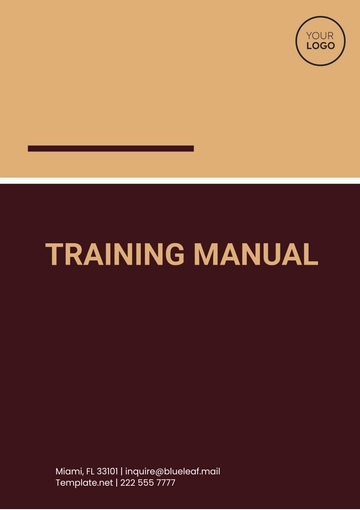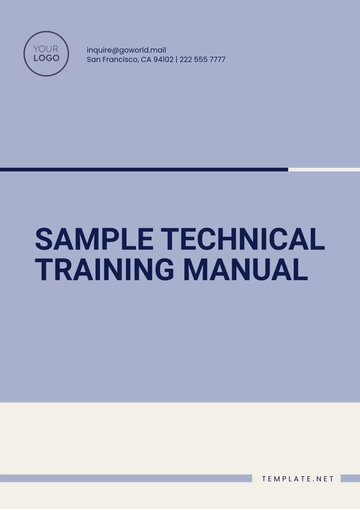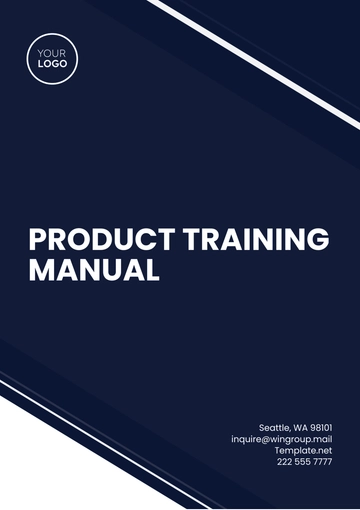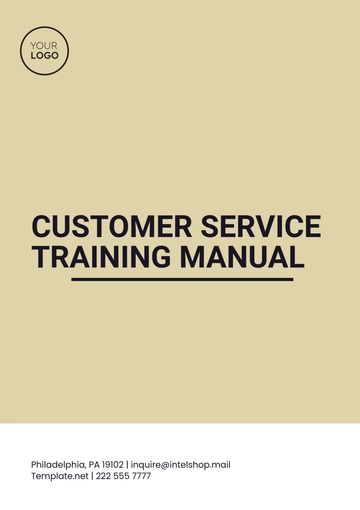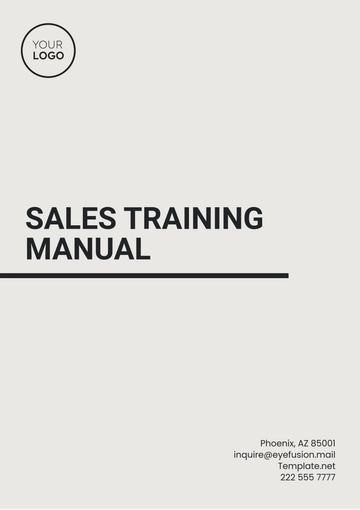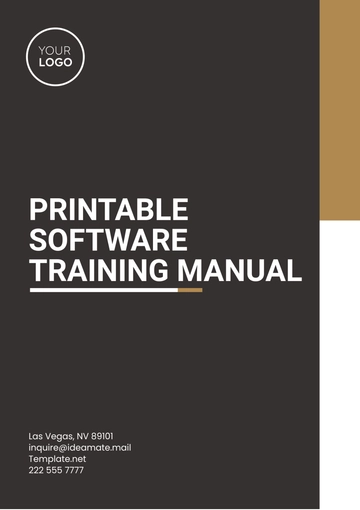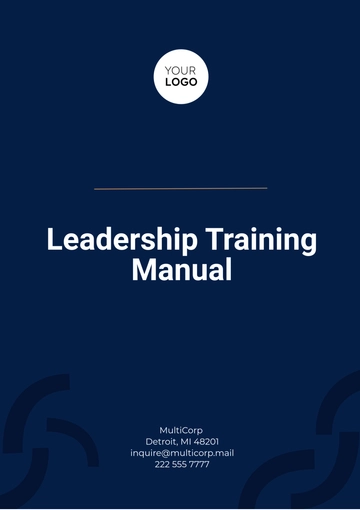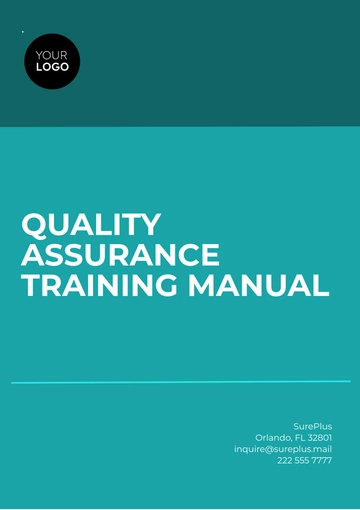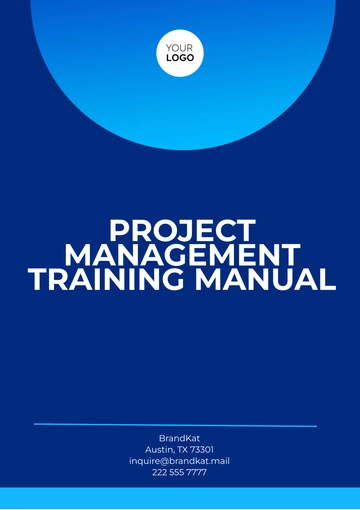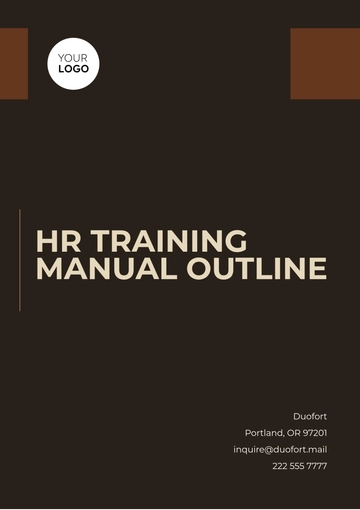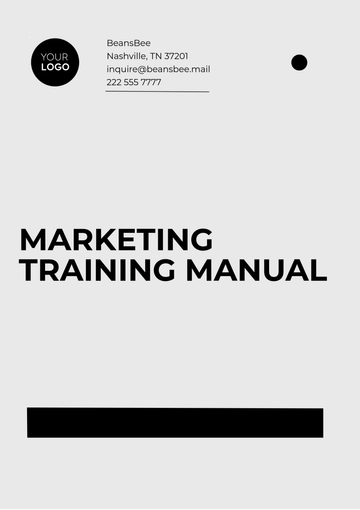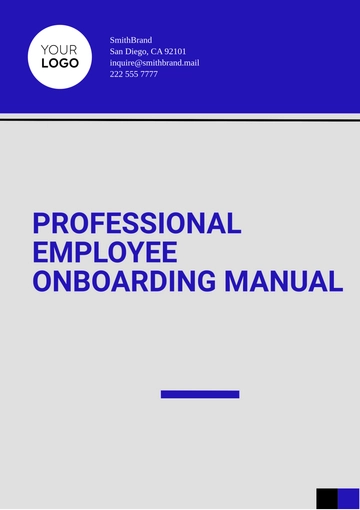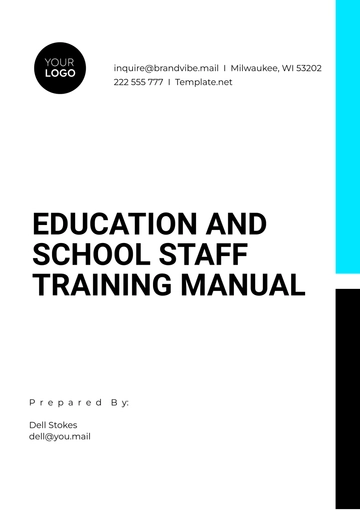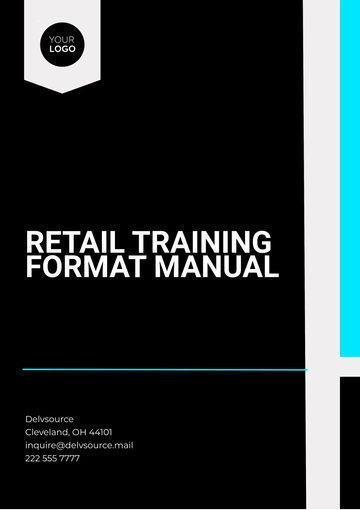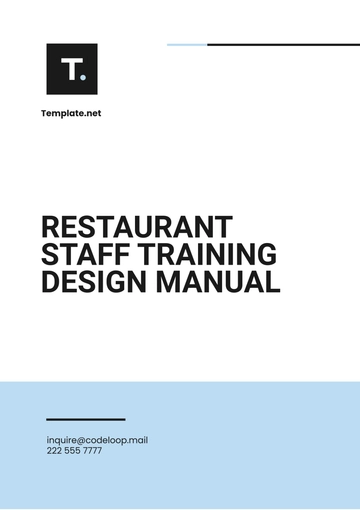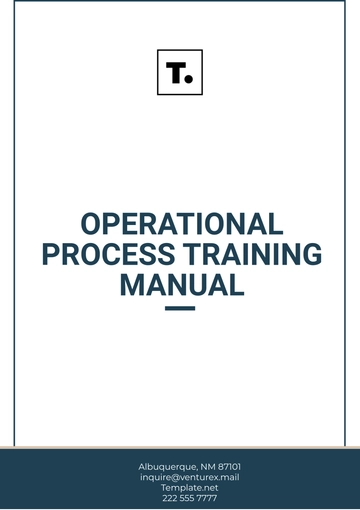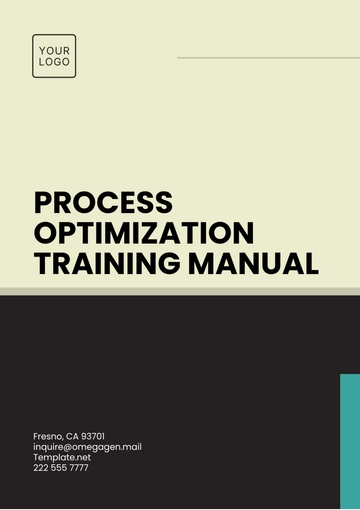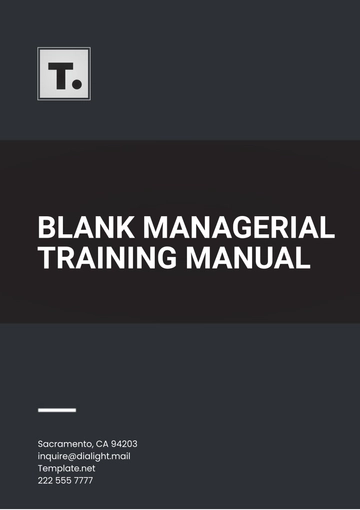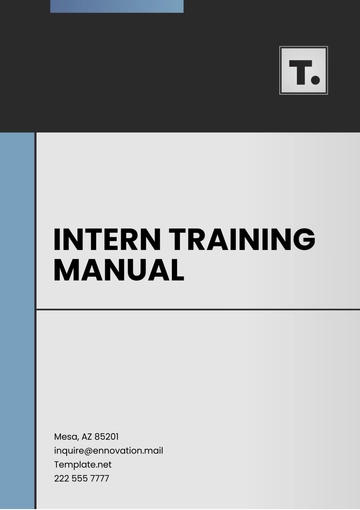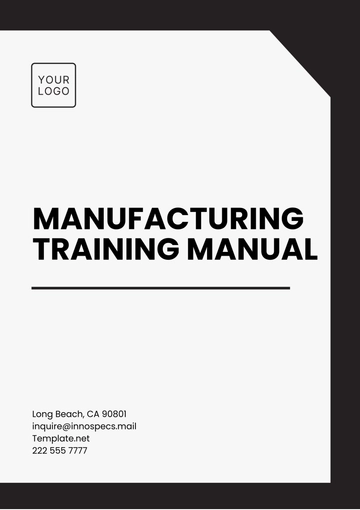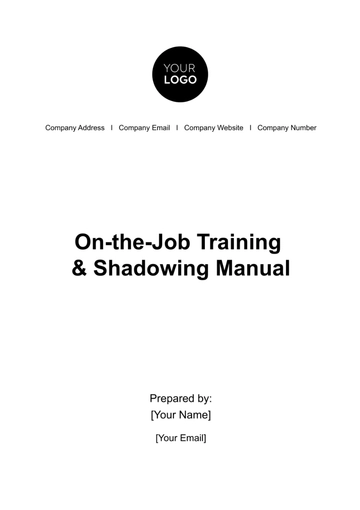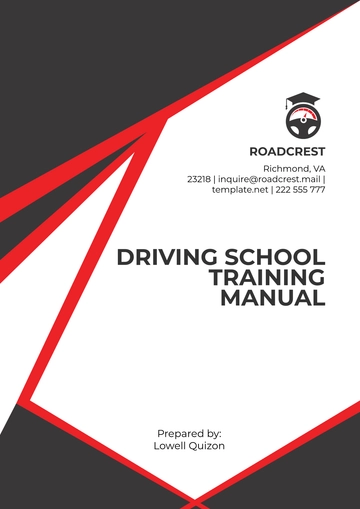Free Nursing Home Employees Training Workshop Manual
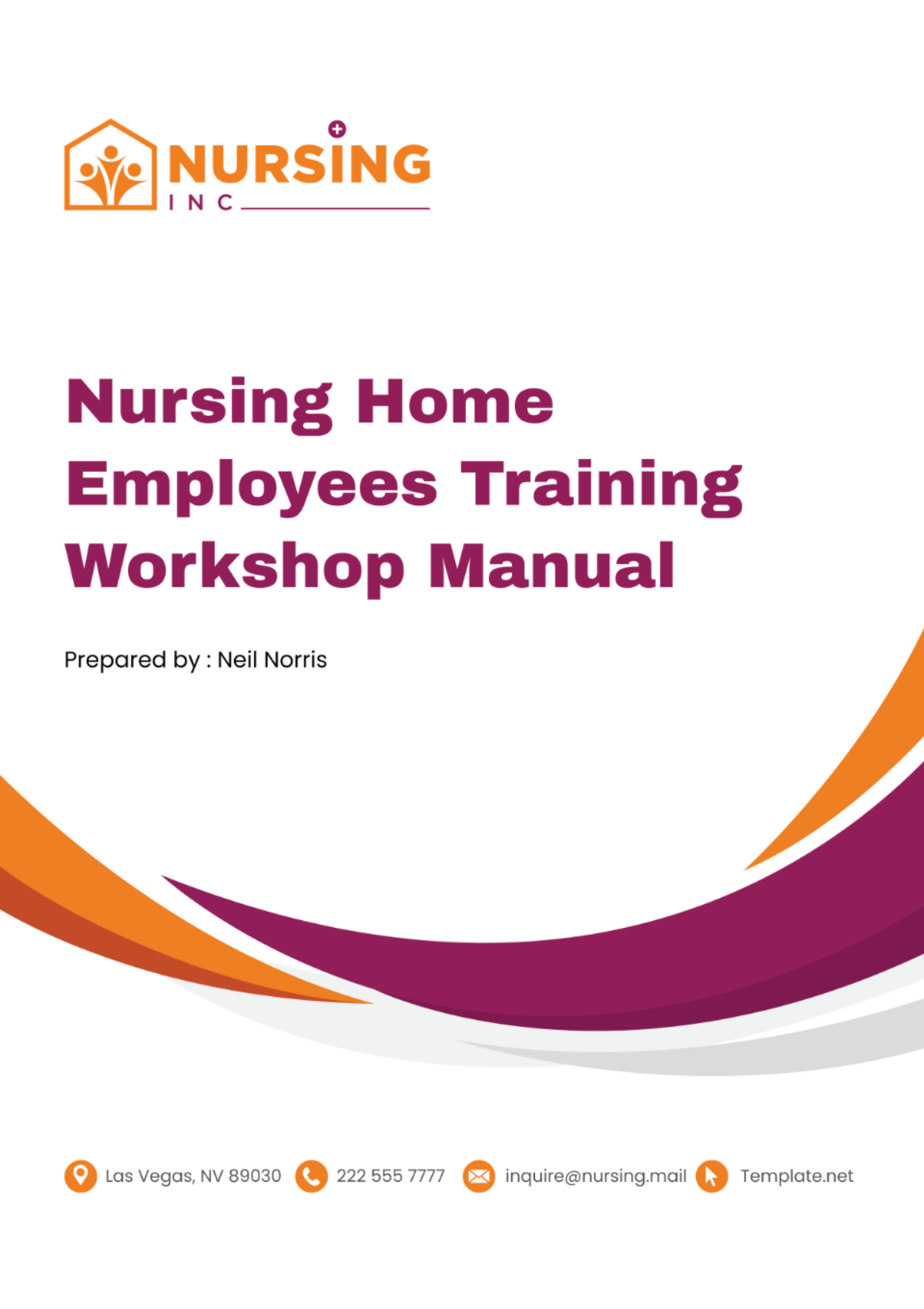
I. Introduction
Welcome to the [Your Company Name] Nursing Home Employees Training Workshop Manual. This training manual is designed to provide you with the information and skills necessary to excel in your role and provide the highest quality of care to our residents.
A. Purpose of the Manual
Comprehensive Guide: This manual serves as a comprehensive guide for all employees participating in our training workshops. It outlines the objectives, content, and structure of each workshop, providing a clear roadmap for your learning journey.
Skill Development: The manual is designed to facilitate skill development. It provides detailed explanations and practical exercises that will help you acquire and refine the skills necessary for your role.
Standardization: The manual ensures standardization in our training approach. By following the guidelines and procedures outlined in this manual, we can ensure that all employees receive consistent and comprehensive training, regardless of when or where the training takes place.
B. How to Use the Manual
Pre-Workshop Preparation: Before attending each workshop, review the relevant sections of the manual. This will give you a good understanding of what to expect and allow you to prepare any questions or areas of concern.
During the Workshop: Use the manual as a reference during workshop activities. It will provide additional information and context that can enhance your understanding and application of the skills being taught.
Post-Workshop Review: After the workshop, use the manual for further review and practice. The manual can serve as a valuable resource for reinforcing what you have learned and applying it in your day-to-day work.
C. Importance of Training
Quality of Care: Training is crucial for ensuring the quality of care in our nursing home. It equips our staff with the knowledge and skills they need to perform their roles effectively and provide the best possible care to our residents.
Regulatory Compliance: Training also helps us comply with various regulations and standards in the healthcare industry. By ensuring that our staff are well-trained, we can meet and exceed these standards, thereby enhancing our reputation and trustworthiness.
Employee Development: Training contributes to employee development. It helps our staff grow professionally, increases their job satisfaction, and leads to better retention rates. By investing in our employees’ development, we are investing in the future of [Your Company Name].
II. Basic Care Training
Basic Care Training is an essential part of the training program at [Your Company Name]. It covers the fundamental aspects of care that our nursing staff provide daily. The following table provides an overview of the topics covered in this training:
Topic | Description |
|---|---|
Personal Hygiene | Techniques for maintaining personal hygiene of residents |
Mobility Assistance | Procedures for assisting residents with mobility |
Feeding Assistance | Techniques for assisting residents with feeding |
A. Personal Hygiene
Hand Hygiene: This involves mastering the correct techniques for hand hygiene, which is crucial for preventing the spread of infections.
1.1. Proper Handwashing: Wet hands with clean water, apply soap, and scrub for at least 20 seconds. Rinse hands well under clean water, and dry hands using a clean towel or air dry. This process is crucial to ensure that the hands are thoroughly cleaned, reducing the risk of transmitting infections.
1.2. Using Hand Sanitizer: Apply a generous amount of hand sanitizer to the palm of one hand, rub hands together, and ensure that the sanitizer covers all surfaces of the hands until they feel dry. This technique is particularly useful when soap and water are not readily available, and it’s important for staff to know how to use hand sanitizer effectively.
1.3. Hand Hygiene Timing: Recognize the key times when hand hygiene should be performed, such as before and after contact with a resident, before and after performing a procedure, after contact with potentially infectious material, and after removing gloves. This knowledge helps staff members maintain good hand hygiene practices consistently.
Resident Hygiene: This involves learning the procedures for assisting residents with their personal hygiene needs.
2.1. Bathing Assistance: Assist residents with bathing, ensuring their comfort and dignity while maintaining their personal hygiene. Ensure to respect the resident’s privacy, communicate clearly about what they are doing, and check regularly to ensure the resident’s comfort.
2.2. Oral Care: Provide assistance to residents with brushing their teeth or dentures, and using mouthwash. Be gentle yet thorough, and to be aware of any signs of oral health issues such as gum disease or tooth decay.
2.3. Hair and Nail Care: Help residents with hair and nail care, including washing and combing hair, and trimming nails. Handle these tasks with care to ensure the resident’s comfort and safety.
B. Mobility Assistance
Safe Transfers: This involves learning techniques for safely transferring residents from beds, chairs, etc.
1.1. Using Transfer Equipment: Properly use transfer equipment such as transfer belts, slide sheets, and hoists. Operate each piece of equipment safely and effectively, and choose the most appropriate equipment for each situation.
1.2. Body Mechanics: It is crucial also to understand the principles of good body mechanics to protect oneself and the resident during transfers. Ensure to keep back straight, bend at the knees, and maintain a wide base of support to prevent injury.
1.3. Communication: Communicate effectively with the resident during transfers. It is important to explain what they are going to do, encourage the resident to do as much as they can, and check the resident’s comfort during and after the transfer.
Fall Prevention: This involves learning strategies for preventing falls and ensuring resident safety.
2.1. Identifying Fall Risks: Ensure to identify fall risks, such as cluttered floors, poor lighting, and unsafe footwear. Conduct regular safety checks and address any identified risks promptly.
2.2. Using Assistive Devices: Use assistive devices such as walkers and grab bars to help residents move safely. Adjust each device to the correct height for the resident, and instruct the resident in using the device.
2.3. Educating Residents and Families: Educate residents and their families about fall prevention. Explain the importance of regular exercise, good nutrition, and wearing safe footwear, and provide practical tips for preventing falls.
C. Feeding Assistance
Dietary Needs: This involves understanding and meeting the dietary needs of residents.
1.1. Understanding Dietary Restrictions: Understand common dietary restrictions in older adults, such as low-sodium or diabetic diets. Read food labels, prepare meals that meet these restrictions, and monitor residents to ensure that they are adhering to their prescribed diets.
1.2. Preparing Meals: Prepare meals that meet the resident’s dietary needs and preferences. Consider the resident’s cultural and personal preferences, and to make meals visually appealing and easy to eat.
1.3. Monitoring Nutritional Intake: Monitor the resident’s nutritional intake and identify any issues, such as poor appetite or difficulty swallowing. Record food intake accurately, recognize signs of poor nutrition, and immediately report concerns to a dietitian or doctor.
Assisting with Meals: This involves learning techniques for assisting residents with eating.
2.1. Encouraging Independence: Encourage residents to eat independently as much as possible. Provide adaptive eating utensils, arrange food on the plate to make it easier to eat, and provide encouragement and assistance as needed.
2.2. Assisted Feeding: Assist residents who need help with eating, including those who have difficulty swallowing or who are at risk of choking. Cut food into small pieces, pace the meal to the resident’s comfort, and monitor the resident for signs of choking.
2.3. Maintaining Dignity: Accommodate with feeding in a way that maintains the resident’s dignity. Sit at eye level with the resident, engage in pleasant conversation during the meal, and ensure that the resident is clean after meals.
In a nutshell, the Basic Care Training provides comprehensive information on fundamental aspects of care in a nursing home setting. By following the guidelines and procedures outlined herein, nursing staff can ensure the highest quality of care for our residents.
III. Advanced Care Training
Advanced Care Training is designed for our clinical staff and is conducted annually. This training delves into more complex care procedures and medical tasks that our clinical staff are responsible for. The following table provides an overview of the topics covered in this training:
Topic | Description |
|---|---|
Medication Management | Procedures for safely administering medications to residents and managing potential side effects |
Wound Care | Techniques for cleaning and dressing more complex wounds and strategies for preventing pressure ulcers |
A. Medication Management
Medication Administration: This involves learning the correct procedures for administering different types of medications, including oral, topical, and injectable medications. It also covers important aspects such as dosage calculation, medication timing, and documentation.
1.1. Oral Medication: Ensure that the resident is in a comfortable and safe position, provide water or other suitable fluids, and observe the resident until they have swallowed the medication. This process is crucial to ensure that the medication is taken correctly and safely.
1.2. Topical Medication: Clean the area where the medication will be applied, apply the medication as directed, and cover the area if necessary. This process is important to ensure that the medication is properly absorbed and does not come into contact with clothing or other surfaces.
1.3. Injectable Medication: Prepare the injection site by cleaning it with an alcohol swab, administer the injection as trained, and dispose of the used needle safely in a sharps container. This process is vital to prevent infection and ensure safe disposal of used needles.
Managing Side Effects: This involves learning about the common side effects of various medications, how to recognize them, and what actions to take if a resident experiences these side effects. It also includes understanding when to report side effects to a doctor or nurse practitioner.
2.1. Recognizing Side Effects: Be aware of common side effects of medications used in the nursing home, monitor residents for these side effects, and document any observed side effects. This process is important for early detection and management of side effects.
2.2. Responding to Side Effects: Know how to respond to common side effects, such as providing comfort measures or adjusting the resident’s position. This process is important to alleviate discomfort and prevent complications.
2.3. Reporting Side Effects: Understand the procedure for reporting side effects to a doctor or nurse practitioner, including what information to provide and when to report. This process is crucial for ensuring appropriate medical intervention when needed.
Medication Safety: This involves understanding the principles of medication safety, including the “five rights” of medication administration: the right patient, the right drug, the right dose, the right route, and the right time.
3.1. Right Patient: Always check the resident’s identity before administering medication. This can be done by checking the resident’s wristband or asking the resident to state their name.
3.2. Right Drug: Check the medication label three times before administration - when taking the medication from the storage area, when preparing the medication, and before administering the medication to the resident. This process is crucial to prevent medication errors.
3.3. Right Dose: Measure the medication carefully and double-check the dose. This process is important to ensure that the resident receives the correct amount of medication.
3.4. Right Route: Administer the medication via the correct route (e.g., oral, topical, injectable). This process is important to ensure that the medication is properly absorbed and effective.
3.5. Right Time: Administer the medication at the correct time, considering any specific instructions such as “before meals” or “at bedtime”. This process is crucial for ensuring the effectiveness of the medication and preventing potential side effects.
B. Wound Care
Basic Wound Care: This involves learning the techniques for cleaning and dressing basic wounds. It includes understanding the different types of wound dressings and when to use each type.
1.1. Cleaning Wounds: Understand how to clean wounds gently and effectively to prevent infection. This involves using a mild soap and water or a saline solution, and cleaning from the center of the wound outwards.
1.2. Dressing Wounds: Learn about the different types of wound dressings and how to apply them correctly to promote healing. This involves choosing the appropriate dressing for the type and stage of the wound, and changing the dressing regularly.
1.3. Changing Dressings: Know when and how to change wound dressings, and how to dispose of used dressings safely. This involves checking the wound for signs of infection, applying a new dressing, and disposing of the used dressing in a biohazard waste container.
Advanced Wound Care: This involves learning the techniques for managing more complex wounds, such as surgical wounds, burns, and pressure ulcers. It includes understanding the stages of wound healing and how to promote optimal healing.
2.1. Assessing Wounds: Learn how to assess the severity and stage of wounds, and how to monitor wounds for signs of infection or other complications. This involves regular wound inspections, accurate documentation, and timely reporting of any changes.
2.2. Complex Dressings: Understand how to apply dressings to more complex wounds, such as packing a deep wound or applying a dressing to a burn. This involves using specific types of dressings and techniques, and monitoring the wound closely for signs of healing or complications.
2.3. Promoting Healing: Learn strategies to promote optimal healing, such as maintaining a moist wound environment and ensuring good nutrition. This involves using appropriate wound dressings, encouraging a balanced diet, and managing any underlying health conditions that could affect wound healing.
Pressure Ulcer Prevention: This involves learning the strategies for preventing pressure ulcers, including regular repositioning, skin care, and use of pressure-relieving devices.
3.1. Regular Repositioning: Understand the importance of regular repositioning and learn safe and effective repositioning techniques. This involves changing the resident’s position at least every two hours, using pillows or foam wedges to redistribute pressure, and checking the skin for signs of pressure damage after repositioning.
3.2. Skin Care: Learn how to care for the skin to prevent pressure ulcers, including keeping the skin clean and moisturized and protecting high-risk areas. This involves using mild soap and warm (not hot) water for cleansing, applying moisturizer to dry skin, and using barrier creams on areas at risk of moisture damage.
3.3. Pressure-Relieving Devices: Learn about the different types of pressure-relieving devices, such as special mattresses and cushions, and how to use them effectively. This involves choosing the appropriate device for each resident, checking the device regularly for proper functioning, and educating the resident and their family about the use of the device.
The importance of this training cannot be overstated, as it directly impacts the health and well-being of our residents and the overall quality of care provided at [Your Company Name]. Overall, the Advanced Care Training of the manual provides comprehensive information on critical aspects of advanced care in a nursing home setting. This serves as a valuable resource for clinical staff, enhancing their understanding and skills in medication management and wound care. By following the guidelines and procedures outlined, the clinical staff can ensure the highest quality of care for our residents.
IV. Resident Rights
In the context of a nursing home, understanding and respecting the rights of residents is crucial. Here, we will provide a comprehensive overview of these rights and how to uphold them in daily operations:
A. Privacy and Dignity
Respecting the privacy and dignity of residents is a fundamental aspect of care. This includes ensuring confidentiality, promoting autonomy, and maintaining a respectful environment.
Confidentiality: All personal information about residents must be kept confidential unless sharing is required by law or consent has been given. This is not just a legal requirement but also a cornerstone of trust between the care provider and the residents.
1.1. Importance of Confidentiality: Breaching confidentiality can lead to a loss of trust and potential legal consequences. Therefore, it’s essential to always respect this aspect of residents’ rights. It’s also important to remember that maintaining confidentiality is not just about protecting information, but also about respecting the person’s right to privacy.
1.2. Maintaining Confidentiality: This involves careful handling of personal information, secure storage of records, and mindful communication about residents’ care. It’s important to ensure that all staff members understand the importance of confidentiality and are trained in the correct procedures for handling and storing resident information.
1.3. Confidentiality in Practice: In practice, this means not discussing residents’ personal information in public areas, not leaving resident records unattended, and not sharing resident information without the necessary consent.
Autonomy: Residents have the right to make decisions about their care and daily activities. These decisions should be respected and support should be provided as needed.
2.1. Promoting Autonomy: This involves providing residents with choices whenever possible, respecting their preferences, and involving them in decision-making processes. It’s important to remember that promoting autonomy is not just about giving choices, but also about providing the support and information needed to make those choices.
2.2. Supporting Autonomy: Autonomy can be supported by providing residents with the information they need to make informed decisions and by respecting their choices even when they may not align with the care provider’s perspective. This means taking the time to explain options and procedures in a way that the resident can understand, and being patient and supportive if the resident makes a choice that is different from what was recommended.
2.3. Autonomy in Practice: In practice, this means always asking for the resident’s input and consent before carrying out any care activities, providing opportunities for the resident to make choices about their daily activities, and respecting the resident’s right to refuse care.
Respectful Environment: An environment where residents feel respected and valued should be created. This includes treating residents with kindness, listening to their concerns, and addressing any issues promptly.
3.1. Creating a Respectful Environment: This involves treating residents with kindness and respect, listening to their concerns, and addressing any issues promptly. It’s important to remember that creating a respectful environment is not just about being polite, but also about showing empathy and understanding.
3.2. Maintaining a Respectful Environment: This involves ongoing efforts to ensure that actions and words demonstrate respect for residents at all times. This means being mindful of how actions and words can affect residents, and striving to create a positive and supportive atmosphere.
3.3. Respectful Environment in Practice: In practice, this means speaking to residents in a respectful and friendly manner, taking the time to listen to their concerns, and taking prompt action to address any issues or complaints.
B. Informed Consent
Informed consent is a key principle in healthcare. It means that before any treatment or procedure is carried out, the resident must be fully informed about what it involves and give their consent.
Understanding Consent: The concept of informed consent and its importance in healthcare should be understood. This includes knowing when consent is needed and what information should be provided to residents.
1.1. Concept of Consent: Informed consent is a process of communication between a patient and their healthcare provider that results in the patient’s authorization or agreement to undergo a specific medical intervention. It’s important to remember that informed consent is not just about getting a signature on a form, but about ensuring that the resident fully understands the proposed intervention and its potential risks and benefits.
1.2. Importance of Consent: Informed consent is not just a form or a signature, but a process of communication that helps to enhance the patient’s understanding of the medical intervention being proposed. It’s also a legal and ethical requirement that protects the patient’s right to autonomy and respects their individual values and beliefs.
1.3. Consent in Practice: In practice, this means always explaining procedures and treatments in a way that the resident can understand, providing ample opportunity for the resident to ask questions, and ensuring that the resident feels comfortable with the decision before proceeding.
Obtaining Consent: There are specific procedures for obtaining informed consent. These procedures must be followed to ensure that consent is valid and legally binding.
2.1. Process of Obtaining Consent: The process of obtaining informed consent involves three key steps: disclosing appropriate information, ensuring that the patient understands the information, and ensuring the voluntariness of the decision. It’s important to remember that each of these steps is crucial for obtaining valid consent.
2.2. Documenting Consent: Once consent has been given, it must be properly documented. This documentation is a legal requirement and provides evidence that the resident has given their consent. It’s also a useful tool for communication and continuity of care, as it allows other members of the care team to see that consent has been obtained.
2.3. Consent in Practice: In practice, this means always using clear and simple language when explaining procedures and treatments, checking for understanding and answering any questions before obtaining consent, and properly documenting the consent in the resident’s medical record.
After understanding the importance of resident rights, it’s clear that these aspects are not just about following procedures. They are about respecting the individuality and autonomy of residents. By ensuring privacy, promoting dignity, and obtaining informed consent, care can be provided that is not only effective but also respectful and empowering. This understanding forms the foundation of care and ensures a respectful and dignified environment for residents.
V. Emergency Procedures
In a nursing home setting, being prepared for emergencies is crucial. Now we will provide a comprehensive guide on the procedures to be followed in various emergency situations.
A. Fire Safety
Fire safety is a critical aspect of care. This includes understanding fire prevention strategies and knowing what to do in case of a fire.
Fire Prevention: All possible measures should be taken to prevent fires. This is not just about following safety regulations, but also about being vigilant and proactive in identifying and addressing potential fire hazards.
1.1. Understanding Fire Hazards: Be aware of common fire hazards in a nursing home setting, such as faulty electrical equipment, flammable materials, and unattended cooking. Regularly inspect the facility for these hazards and take immediate action to mitigate them.
1.2. Preventing Fire Hazards: Conduct regular safety checks to identify and address potential fire hazards. This includes ensuring that all electrical equipment is in good working condition, properly storing and disposing of flammable materials, and enforcing strict no-smoking policies within the facility.
1.3. Fire Safety Training: Regularly participate in fire safety training to ensure awareness of fire hazards and knowledge on how to prevent them. This training includes the proper use and maintenance of electrical equipment, safe handling and storage of flammable materials, and emergency evacuation procedures.
In Case of Fire: Knowing what to do in case of a fire is crucial for ensuring safety. This involves understanding the fire evacuation plan, knowing how to use fire-fighting equipment, and knowing how to raise the alarm.
2.1. Understanding the Fire Evacuation Plan: The fire evacuation plan should be clearly understood. This includes knowing the evacuation routes, the location of fire exits, and the assembly point. Regularly participate in fire drills to familiarize with these procedures and ensure they can be carried out quickly and efficiently in case of a fire.
2.2. Using Fire-Fighting Equipment: Ensure knowing how to use fire-fighting equipment, such as fire extinguishers and fire blankets. This includes knowing where this equipment is located and how to use it safely and effectively.
2.3. Raising the Alarm: In case of a fire, the alarm should be raised immediately. This includes knowing activating the fire alarm system and informing all residents and staff of the fire. It’s important to stay calm and clear when communicating during a fire emergency to avoid causing panic and confusion.
B. Medical Emergencies
Medical emergencies can occur in a nursing home setting. This involves recognizing signs of common medical emergencies and knowing how to respond.
Recognizing Emergencies: Being able to recognize the signs of common medical emergencies is crucial for ensuring the timely and effective treatment of residents.
1.1. Understanding Common Emergencies: Be aware of the signs and symptoms of common medical emergencies, such as heart attacks, strokes, and falls. Familiarize with these signs and symptoms and ensure they can be recognized quickly.
1.2. Monitoring Residents: Regularly monitor residents to identify any changes in their health status that could indicate a medical emergency. This includes observing residents for signs of distress, regularly checking vital signs, and promptly reporting any concerning observations.
1.3. Reporting Emergencies: Any suspected medical emergencies should be reported immediately. It’s important to provide clear and accurate information about the resident’s condition and the signs and symptoms observed.
Emergency Response: Knowing how to respond to medical emergencies is crucial for ensuring the safety and well-being of residents.
2.1. First Aid Training: Participate in basic first aid training. This includes knowing how to perform CPR, how to treat minor injuries, and how to assist someone who is choking.
2.2. Using Emergency Equipment: Properly use emergency equipment, such as defibrillators and oxygen tanks. This includes knowing where this equipment is located and how to use it safely and effectively.
2.3. Calling for Help: In case of a medical emergency, help should be called immediately. This includes calling for an ambulance and what information to provide to the emergency services.
It becomes evident that these aspects go beyond merely adhering to procedures. They are about being prepared, being vigilant, and knowing how to respond effectively in case of an emergency. By understanding fire safety and medical emergency procedures, the safety and well-being of residents can be ensured.
VI. Conclusion
The Nursing Home Employees Training Workshop Manual of [Your Company Name] is a comprehensive guide designed to equip you with the necessary skills and knowledge to provide the highest quality of care to our residents. The manual covers a wide range of topics, from basic care training to advanced care procedures, resident rights, and emergency procedures.
By using this manual and participating in our workshops, you are taking an important step towards improving your skills and enhancing the quality of care provided to our residents. Remember, the learning doesn’t stop here. Continuous learning and improvement are key to maintaining high standards of care. We encourage you to revisit this manual regularly and to seek further learning opportunities whenever possible.
We thank you for your commitment to learning and your dedication to our residents. Your hard work and dedication make a significant difference in the lives of our residents. We look forward to working with you as we strive to provide the best possible care for our residents. Thank you for being a part of our team at [Your Company Name]!
- 100% Customizable, free editor
- Access 1 Million+ Templates, photo’s & graphics
- Download or share as a template
- Click and replace photos, graphics, text, backgrounds
- Resize, crop, AI write & more
- Access advanced editor
Empower employees with this editable Nursing Home Employees Training Workshop Manual Template by Template.net! This manual offers a comprehensive guide for conducting training workshops for nursing home staff. Utilize customizable fields and the AI Editor Tool to develop engaging workshop manuals that enhance learning retention and skill development among employees!
